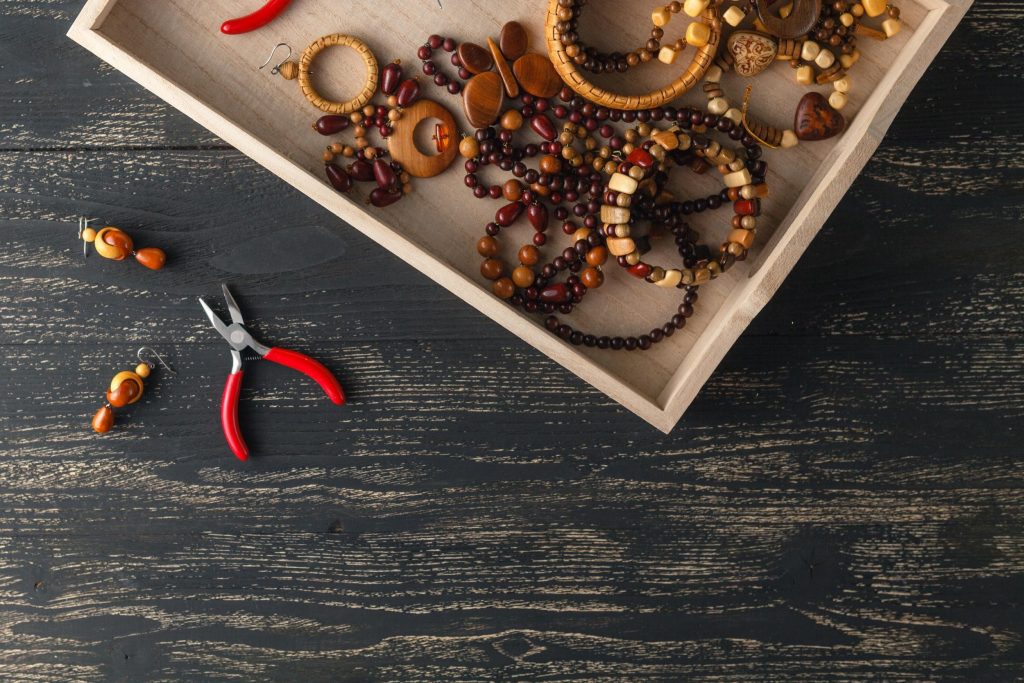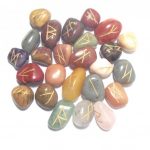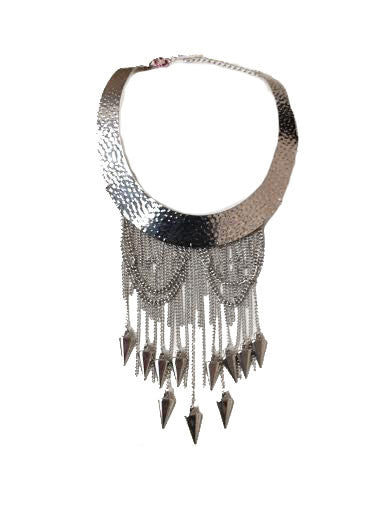
Gems are beautiful to behold.
However, gems can also create a difference in many artisans’ lives and
the lives of those in need, especially when jewelry making is promoted
for a cause, supports a cause or creates jobs for those in need of
support.
There are many other ways jewelry can be more than just a
pretty accessory when jewelry makers use sustainable materials and
resources from those in need.
We’ve put together some of the
different ways jewelry making can create a positive effect in the world.
But first, some background on the importance of giving.
The Importance of Having a Philanthropic Mission
In what feels like an overly commercial world, it’s important for companies
to have a philanthropic mission so that their footprint doesn’t just
focus on the bottom line but also provides the surrounding community
with support or helps sustain the environment.
Threefold Returns
Dedicating part of what we do as a business to a charitable cause creates a threefold return for the investment we make.
First, the money donated or assistance provided to a charitable cause
gives back to the community, which we are all a part of, thus improving
all our lives.
Second, the act of giving feels and looks good to
everyone involved simply because it is good. This is especially so when
it is done in a sustainable way by providing training or economic
opportunities to disadvantaged groups. This concept builds on the
importance of teaching someone to fish, rather than giving them fish, so
they’re fed, and you are too.
The third way a philanthropic
mission pays its worth back is that it is a deductible expense, which
contributes to company marketing.
Companies must invest in marketing anyway, so why not make it philanthropic.
Philanthropy is an all-round great way to participate
— especially in artistic positive energy ventures such as gemstones and jewelry.
Here are 11 of our favorite ways gems and jewelry engender generosity and a better world:
1.
Creating Jobs for Artisans and Groups in Need
Artisans from sectors that are impoverished, poorly skilled or unable
to find traditional work can be trained to perform some of the simpler
jewelry making processes. This work can lead to entrepreneurial schemes
for poverty-stricken communities by providing skills and regular work
for low-skilled workers.
Non-profit organizations, similar to Akola
or Ten Thousand Villages
,
have been created to facilitate work creation, training and
administration of these schemes for disadvantaged groups to become
jewelry makers.
Non-profits can connect under-developed communities with a market for their work and empower the communities to self-manage.
2.
Raising Awareness of a Cause
“Awareness jewelry” can help promote a cause by the motif behind the jewelry.
For example, the familiar pink ribbon for breast cancer is well known.
However, there is a large range of colors available for showing support
for other causes, as well as other symbols that show support.
Aside from awareness ribbons, many charitable causes and non-profits
have emblems that can be incorporated into jewelry makers’ designs.
3.
A Small Amount Can Go A Long Way
Donating even a small portion of every sale to a charitable cause can
help create immense community benefits from creating jewelry.
The
small amount generated from each sale goes a long way to help a needy
cause. Additionally, customers recognize that the company cares,
employees feel the company cares and it feels good to help the effort
because it is a good one.
The revenue generated from helping a
charitable cause is far more effective in marketing, and it creates a
wider positive impact.
4.
Providing Different Ways to Show Support
A piece of jewelry can offer the wearer different ways to show support
by employing a color related to a symbol of a helpful organization or a
charitable cause. This can include color combination choices, individual
jewelry design or specific symbolism.
5.
Partnering with a Cause
Jewelry makers that partner with artisans or groups in need for the
supply of materials or products help support a cause. The partnership
benefits individuals, groups and the wider society.
This partnership can happen in one of three ways: direct support, employment or business relationships.
Jewelry making may directly support a cause through a donation from
proceeds, it may promote employment of disadvantaged groups or jewelry
makers may purchase materials from groups in need or groups that support
a cause.
All three ways provide direct support for a cause through the art of jewelry making.
6.
Inspiring Creativity
Jewelry making inspires creativity amongst both artisans and those who
choose to wear the art. A beautiful piece of jewelry is an artistic
masterpiece. Natural gemstones also inspire creativity by their natural
beauty of form, color and combinations.
Creativity helps spread positivity and brightens our environment.
7.
Fostering Individuality
Jewelry making can provide an individual statement through art, color
and combination choices, or from the individual formation of natural
gemstones and pearls.
The individuality of jewelry provides a unique and elegant way to show support for a cause.
Many gemstones
and soft metal beads like copper
are handmade or hand finished, which provides uniqueness in every item and supports the artisanal approach.
8.
Teaching Special Needs or Disadvantaged Groups Jewelry Making
Jewelry makers can offer free craft workshops for special needs and
disadvantaged groups, which provide a positive impact on society.
Sharing the trade via creative workshops showcases a jewelry creator’s
skill while assisting the community group in learning new skills,
building self-esteem and enjoying a creative act.
9.
Promoting Use of Natural Materials
A jewelry maker that promotes renewable natural resources will assist in improving environmental impact from their creations.
Supporting jewelry makers that use naturally renewable resources helps
everyone feel better knowing that the impact of jewelry creation has a
positive effect on the world around us.
10.
Promoting Materials from Sustainable Sources
Jewelry makers who use materials from sustainable sources not only
support local communities but can positively impact the environment.
11.
Assisting Artisans with Support Networks
Jewelry makers in poorer communities can combine into co-ops where
networks of artisans can help each other grow. Larger purchasing and
distribution sectors can provide support for these initiatives by
offering guidance with finances, promoting sustainable wages and
offering advice on quality and production for artisans.
Conclusion
Jewelry makers can provide a positive global impact in many ways. When
shopping for jewelry, support those that do. Look for jewelry companies,
small and large, that support sustainable economic development, support
charities, or give back to the community in other ways. Jewelry makers
that do this not only look great on the outside but feel great on the
inside too.
Brenda Kimble is a writer and stay-at-home mother of two daughters and a son, plus their beagle named Duke! She loves blogging, crafting, and spending time with her family. She also enjoys strolling the streets of her quaint neighborhood in Austin, Texas and finding the trendiest hotspots for fashion, food, and live music.






















 There is some jewelry that almost seems to blend into a woman’s skin or clothes. The piece may be pretty, but it isn’t something that is likely to attract attention from across the room. Minimalist jewelry is simple, delicate, and classic. It includes things such as simple pearl earrings, a gold chain necklace with a simple charm. Bangle bracelets are also popular choice for those who prefer to be a bit more subdued.
There is some jewelry that almost seems to blend into a woman’s skin or clothes. The piece may be pretty, but it isn’t something that is likely to attract attention from across the room. Minimalist jewelry is simple, delicate, and classic. It includes things such as simple pearl earrings, a gold chain necklace with a simple charm. Bangle bracelets are also popular choice for those who prefer to be a bit more subdued. If you’ve fantasized a fairy godmother waving her wand sending you to the ball, you might be a girly girl. This jewelry will feature a lot of: pink, purple, and other pastels, tinted glass beads, ribbons, lace, silver and gold. If you’re committed to the role, you may be able to pull off a tiara. If not, beaded hair accessories are not out of the question.
If you’ve fantasized a fairy godmother waving her wand sending you to the ball, you might be a girly girl. This jewelry will feature a lot of: pink, purple, and other pastels, tinted glass beads, ribbons, lace, silver and gold. If you’re committed to the role, you may be able to pull off a tiara. If not, beaded hair accessories are not out of the question. Native Americans from the Southwest section of the United States are known for their turquoise and silver
Native Americans from the Southwest section of the United States are known for their turquoise and silver